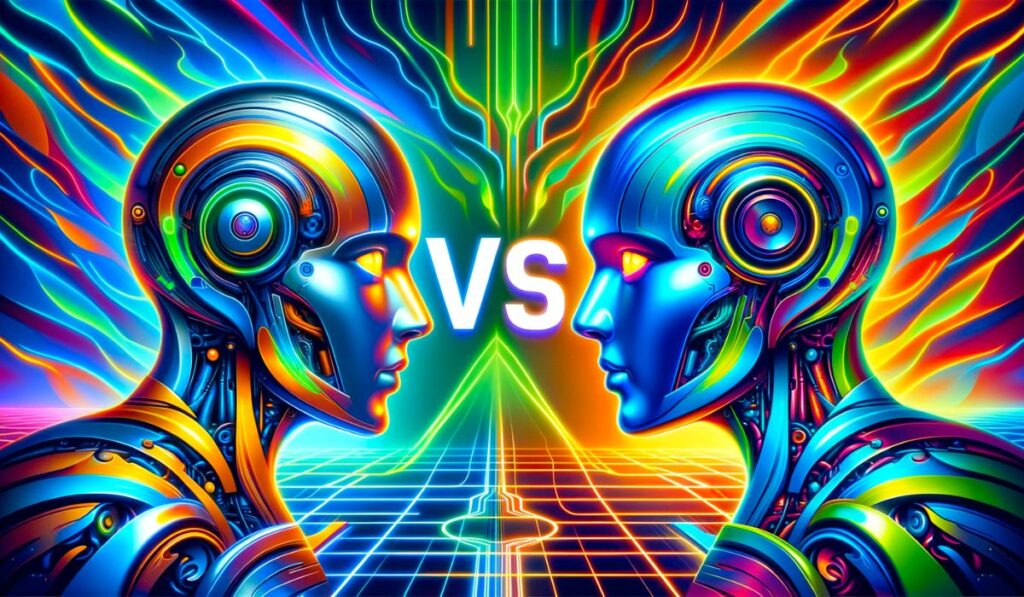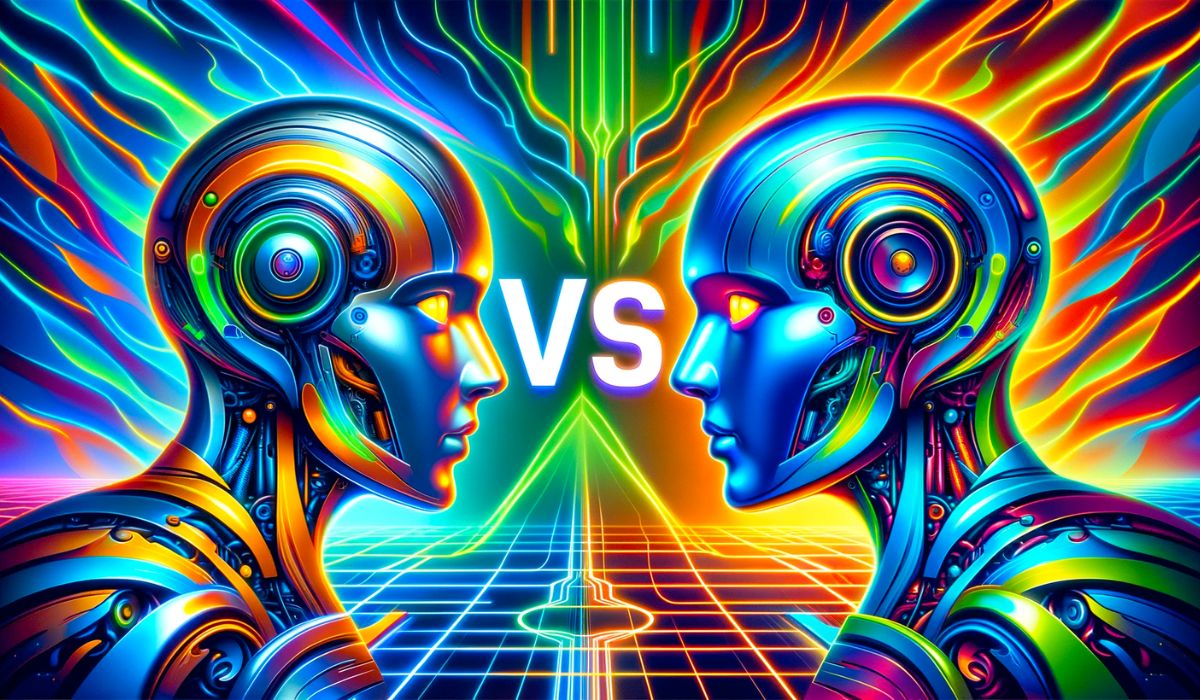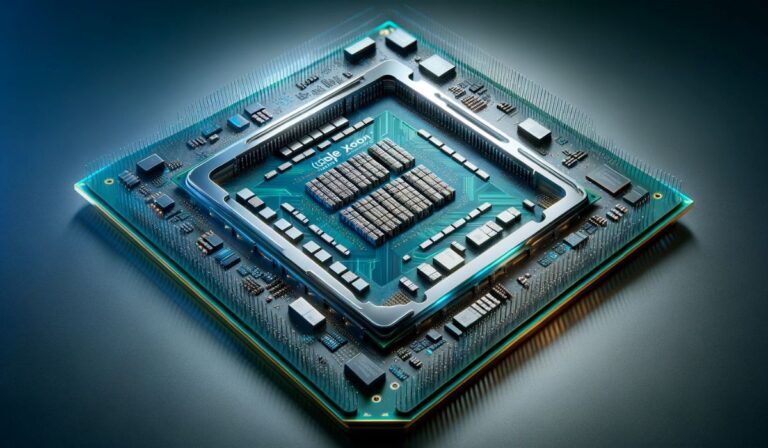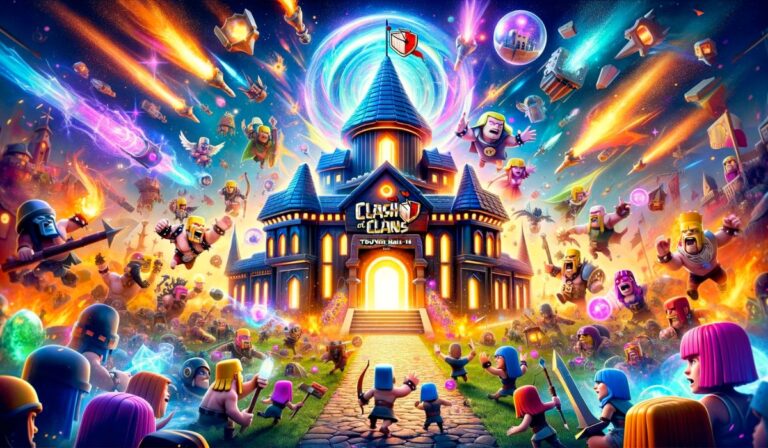AI Titans Clash: Google’s Gemini vs OpenAI’s ChatGPT
The world of artificial intelligence has been abuzz with Google’s latest foray into the realm: the launch of its highly anticipated Gemini AI model. As a bold move to reclaim the lead in the AI race, Google’s unveiling of Gemini marks a significant shift in the landscape, long dominated by OpenAI, the makers of ChatGPT.
Google’s Gemini: More Than Just a Competitor
Gemini isn’t just Google’s answer to OpenAI’s ChatGPT; it’s a leap forward. Built by amalgamating resources from across Alphabet’s expansive workforce, including DeepMind and cloud computing teams, Gemini stands at the forefront of AI technology. Sundar Pichai, CEO of Alphabet and Google, has emphasized the immense science and engineering effort behind Gemini, indicating the company’s commitment to this venture.

The Multimodal Edge of Gemini
One of the standout features of Gemini is its “multimodal” nature. Unlike other large language models that combine multiple single-modality models, Gemini is trained on a mixture of text, audio, and video, offering enhanced reasoning skills, particularly in image analysis. This capability was showcased through various demonstrations, like identifying sleight of hand in a magic trick and analyzing a paper airplane’s design for flight efficiency.
Gemini’s Trio: Ultra, Pro, and Nano
The Gemini model comes in three variants: Gemini Ultra, Gemini Pro, and Gemini Nano. Gemini Ultra, the most advanced version, is designed for complex tasks and is still undergoing rigorous testing. Gemini Pro, a mid-range model, is already enhancing the capabilities of Google’s Bard chatbot, improving its understanding, reasoning, and coding skills. The Nano version, tailored for smartphones, will soon bring AI capabilities to devices like the Google Pixel 8 Pro.
Integrating Gemini Across Google’s Ecosystem
Google’s strategy involves integrating Gemini into its wide array of products. This includes not only its experimental search engine but also other core offerings like Chrome, Ads, and Duet AI. The integration aims to transform user interactions with these platforms, moving towards more conversational and intuitive experiences.
The Broader Implications for AI
Google’s launch of Gemini is more than just a technological advancement; it’s a strategic move in the ongoing AI wars. With Microsoft already incorporating GPT-powered Copilots into its services, Google’s Gemini represents a critical step in staying competitive. More importantly, it signifies Google’s long-term vision to secure its dominance in the evolving digital landscape.
In essence, Google’s Gemini is not just a new model; it’s a bold statement in the AI world, heralding a new era of technological advancement and competition. With its multimodal capabilities and integration into a broad spectrum of products, Gemini is set to reshape not only Google’s trajectory but also the future of AI interactions and applications.
As of December 2023, the world of artificial intelligence is witnessing significant advancements with Google’s release of the Gemini model and the ongoing development of OpenAI’s ChatGPT. Google’s Gemini AI model has been introduced as a direct competitor to OpenAI’s ChatGPT, particularly the GPT-4 version.
Gemini stands out with its multimodal capabilities, being trained on a mixture of text, audio, and video, which gives it enhanced reasoning skills, particularly in image analysis. This model is being integrated into various Google products, including its search engine and the Bard chatbot, aiming to transform user interactions with these platforms.
On the other hand, OpenAI’s ChatGPT, based on the GPT-3.5 and the more advanced GPT-4 models, has already made significant strides in natural language processing and machine learning. The anticipation for GPT-5 is high, although OpenAI CEO Sam Altman has indicated that the company is not working on GPT-5 yet, focusing instead on enhancing GPT-4 with features like the ability to connect to the internet and improvements in accuracy and ethical considerations. GPT-4 already boasts an impressive performance in various tests and supports larger queries compared to its predecessors. It also has a lower tendency to produce hallucinations or inappropriate content.
OpenAI has also announced an API for ChatGPT, allowing third-party developers to integrate ChatGPT into their apps and services. This move makes it significantly cheaper to use ChatGPT for various applications and also includes Whisper, OpenAI’s AI-powered speech-to-text model. This development could potentially open up new avenues for the application of AI in different sectors.
When comparing Google’s Gemini and OpenAI’s ChatGPT-4, both models have their strengths and limitations. In a head-to-head comparison conducted by Cointelegraph, both models provided similar primary definitions for cryptocurrencies but differed in the additional information they offered
While Gemini provided investment advice with source links, ChatGPT concluded with a brief history of Bitcoin and the emergence of altcoins. In questions about Bitcoin as an investment and the identity of Satoshi Nakamoto, both models provided thorough answers but with different approaches and details. This highlights the unique capabilities and focus areas of each model.
These developments in AI models by Google and OpenAI are reshaping the landscape of artificial intelligence, offering advanced capabilities and setting the stage for further innovations in the field.







